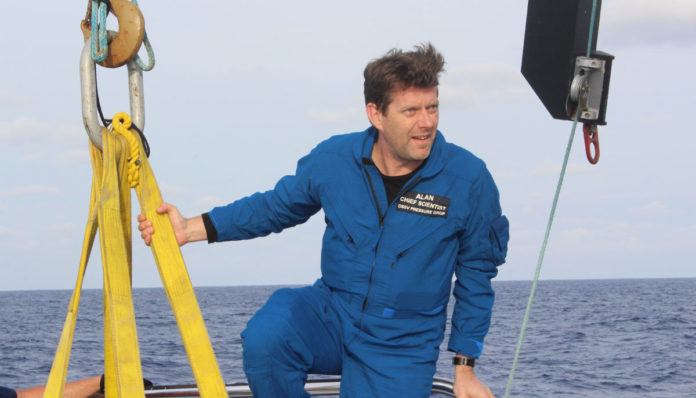Newcastle University scientist plunges 7,180 metres into the depths of the Java Trench to become the deepest diving Brit in history.
Dr Alan Jamieson, was part of the team to reach one of the most isolated points on the planet: the deepest point of the Java Trench in the Indian Ocean.
Led by deep sea pioneer Victor Vescovo, the team travelled 23,596 feet to the bottom of the trench and captured footage of what are believed to be entirely new species, yet unseen by humans. This included a new species of hadal snailfish and an extraordinary gelatinous animal – thought to be a Stalked Ascidean, otherwise known as a Sea Squirt – which does not resemble anything seen before.
This is the third time the Five Deeps team has successfully dived to the previously-unvisited bottom of one of the world’s five oceans.
Spending an incredible 8 hours underwater – 2.5 hours down, 3 hours on the bottom and 2.5 hours to return safely to the surface – the team the mission is being filmed by Atlantic Productions for a five-part Discovery Channel documentary. The series is due to air in late 2019.
Dr Jamieson, a senior lecturer in marine ecology, said:
“It is not often we see something that is so extraordinary that it leaves us speechless.
“Amongst many other rare and unique observations, the stalked Ascidean was a really significant moment. At this point we are not entirely sure what species it was, but we will find out in due course.
“This was a big moment for hadal science and really demonstrated the scientific capability of the submersible.
“It has now proven that we can now do more, and access more places, than with any other marine vehicle in the world – including remotely-operated vehicles – at these extreme depths.”
Newcastle University scientists and engineers have been pioneering technology for the exploration of these ultra-deep environments for the last five years and have to date completed more than 250 deployments of their novel ‘lander’ systems.
Using two full-ocean depth (11,000 m) capable landers equipped with HD cameras and traps the Newcastle team have been able to explore the deep sea, discovering three new species of Snailfish in the Atacama Trench.The team also discovered the first evidence of man-made fibres and plastic in the guts of crustaceans taken from Challenger Deep in the Mariana Trench – some of the deepest living organisms on earth.







